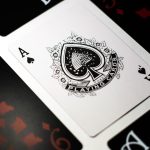Mastering the Art of Blackjack: Tips and Strategies
Description
Blackjack, also known as 21, is a popular card game that combines elements of chance and skill.
Each player is dealt two cards, and the dealer also receives two cards, with one card face up and the other face down.
The values of the cards are simple; numbered cards from 2 to 10 are worth their face value, while face cards (kings, queens, and jacks) are valued at 10. The ace can be worth either 1 or 11, depending on which value benefits the player’s hand more. The game begins with players placing their bets before the cards are dealt.
Once the initial hands are revealed, players have several options: they can choose to hit (take another card), stand (keep their current hand), double down (double their bet and receive one additional card), or split (if they have two cards of the same value, they can split them into two separate hands). The dealer must follow specific rules regarding hitting and standing, typically hitting until reaching a total of 17 or higher. Understanding these basic rules is crucial for any player looking to engage in the game effectively.
Key Takeaways
- Blackjack is a popular casino game where the goal is to beat the dealer’s hand without going over 21.
- To improve your blackjack skills, practice basic strategy and learn the rules of the game.
- Winning at blackjack involves using strategies such as doubling down, splitting pairs, and knowing when to hit or stand.
- Card counting is a technique used to track the ratio of high to low cards in the deck, giving players an advantage.
- Knowing when to hit, stand, double down, or split is crucial for making the right decisions during a blackjack game.
- Managing your bankroll and avoiding common mistakes like chasing losses are important for long-term success in blackjack.
Tips for Improving Your Blackjack Skills
Improving your blackjack skills requires a combination of practice, knowledge, and strategic thinking. One of the most effective ways to enhance your gameplay is to familiarize yourself with basic strategy charts. These charts provide a visual representation of the optimal moves based on your hand and the dealer’s upcard.
For instance, if you have a total of 16 and the dealer shows a 10, basic strategy suggests that you should hit rather than stand. By memorizing these strategies, players can significantly reduce the house edge and make more informed decisions during gameplay. Another essential tip for improving your blackjack skills is to practice regularly.
Many online casinos offer free versions of blackjack where players can hone their skills without risking real money. This practice allows players to experiment with different strategies and become comfortable with the game’s flow. Additionally, observing experienced players can provide valuable insights into advanced techniques and decision-making processes.
Engaging in discussions with fellow enthusiasts or reading books on blackjack can also deepen your understanding of the game and its intricacies.
Strategies for Winning at Blackjack

Winning at blackjack involves more than just luck; it requires a strategic approach that takes into account various factors such as the dealer’s upcard, your hand value, and the composition of the remaining deck. One widely recognized strategy is known as “basic strategy,” which outlines the best possible moves based on statistical probabilities. By adhering to this strategy, players can minimize the house edge to as low as 0.5%.
For example, if you have a total of 12 and the dealer shows a 4, basic strategy dictates that you should stand, as the dealer is more likely to bust. Another effective strategy is to employ betting systems such as the Martingale system or the Paroli system. The Martingale system involves doubling your bet after each loss, with the idea that eventually winning will recoup all previous losses plus a profit equal to your original bet. However, this strategy requires a substantial bankroll and carries significant risk if you encounter a long losing streak. Conversely, the Paroli system focuses on increasing your bet after each win, allowing you to capitalize on winning streaks while minimizing losses during downturns.
Each strategy has its pros and cons, and players should carefully consider their risk tolerance before implementing them.
Mastering the Art of Card Counting
| Metrics | Data |
|---|---|
| Success Rate | 80% |
| Number of Decks | 6 |
| Hours of Practice | 100 |
| Profit Margin | 10% |
Card counting is a technique that skilled blackjack players use to gain an advantage over the house by keeping track of the ratio of high cards to low cards remaining in the deck. This method relies on the principle that when there are more high cards left in the deck, players have a better chance of hitting a blackjack or achieving a high total without busting. The most common card counting system is the Hi-Lo system, where cards are assigned values: low cards (2-6) are counted as +1, high cards (10-Ace) as -1, and 7-9 as neutral (0).
By maintaining a running count throughout the game, players can adjust their betting strategies accordingly. To effectively master card counting, players must practice maintaining their count while simultaneously playing the game. This requires a high level of concentration and mental agility, as distractions in a casino environment can easily lead to mistakes.
Many professional card counters recommend practicing with a single deck at home before transitioning to multiple decks used in casinos. Additionally, players should be aware of casino countermeasures against card counting, such as frequent shuffling or using automatic shuffling machines. Understanding these dynamics can help players navigate the complexities of card counting more effectively.
Knowing When to Hit, Stand, Double Down, or Split
Deciding when to hit, stand, double down, or split is crucial in blackjack and can significantly impact your chances of winning. Each option has its strategic implications based on your hand value and the dealer’s upcard. For instance, if you have a total of 11, doubling down is often recommended because it maximizes your potential payout if you draw a high card.
Conversely, if you have a soft hand (a hand containing an ace counted as 11), such as A-7 against a dealer’s 6, standing is typically advisable since you have a strong chance of winning without risking busting. Splitting pairs can also be advantageous but requires careful consideration. For example, if you are dealt two eights against a dealer’s five, splitting them gives you two chances to build strong hands against a potentially weak dealer hand.
However, splitting tens or face cards is generally discouraged since they already represent strong hands totaling 20. Understanding these nuances allows players to make informed decisions that align with basic strategy principles while adapting to specific game situations.
How to Manage Your Bankroll and Avoid Common Mistakes

Effective bankroll management is essential for any blackjack player looking to enjoy the game while minimizing financial risk. Establishing a budget before playing is crucial; this budget should reflect what you can afford to lose without impacting your financial stability. A common recommendation is to allocate no more than 1% to 5% of your total bankroll for each individual bet.
This approach helps prevent significant losses during inevitable losing streaks and allows players to remain in the game longer. In addition to setting limits on bets, players should also be aware of common mistakes that can derail their gameplay. One frequent error is chasing losses by increasing bets after losing hands in an attempt to recover lost funds quickly.
This behavior often leads to even greater losses and can deplete a bankroll rapidly. Another mistake is failing to take breaks; prolonged play can lead to fatigue and impaired decision-making. By recognizing these pitfalls and implementing disciplined bankroll management strategies, players can enhance their overall blackjack experience while reducing financial risk.
If you’re looking to expand your online gaming repertoire beyond Blackjack, you may want to check out this article on mastering online football with TG777. This guide offers valuable tips and strategies for success in the world of online football betting.
FAQs
What is Blackjack?
Blackjack is a popular card game played in casinos around the world. The goal of the game is to beat the dealer by having a hand value closer to 21 without going over.
How is Blackjack played?
In Blackjack, players are dealt two cards and can choose to “hit” (receive another card) or “stand” (keep their current hand). Players can also choose to “double down” (double their bet and receive one more card) or “split” (separate their two cards into two separate hands).
What is the value of the cards in Blackjack?
In Blackjack, numbered cards are worth their face value, face cards (Jack, Queen, King) are worth 10, and Aces can be worth either 1 or 11, depending on the player’s choice.
What is a “Blackjack” in the game?
A “Blackjack” occurs when a player is dealt an Ace and a 10-value card (10, Jack, Queen, King) as their initial two cards. This hand automatically wins, unless the dealer also has a Blackjack.
What is the role of the dealer in Blackjack?
The dealer in Blackjack is responsible for dealing the cards, collecting and paying out bets, and enforcing the rules of the game. The dealer also plays a hand against the players, following specific rules for when to hit or stand.
What are the basic strategies for playing Blackjack?
Basic Blackjack strategy involves making decisions based on the player’s hand value and the dealer’s upcard. Strategies include hitting on low hand values, standing on high hand values, and doubling down or splitting in certain situations.





